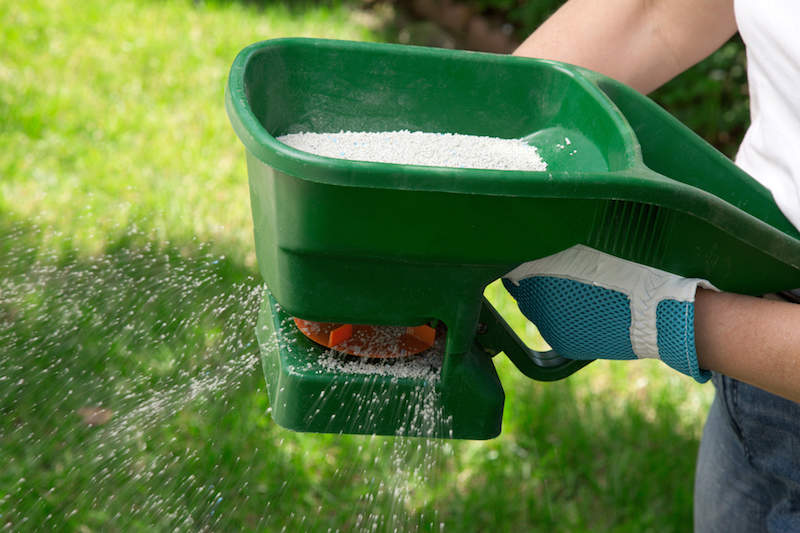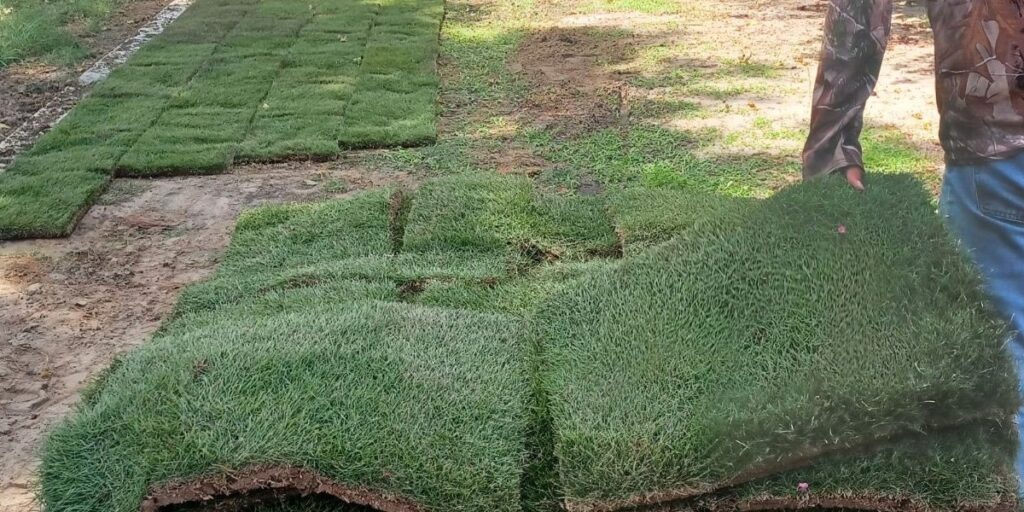Imagine stepping into your backyard, feeling the soft, lush grass beneath your feet, and seeing a vibrant sea of green that looks like something out of a magazine. Achieving that picture-perfect lawn is not a distant dream; it can be your reality with the right approach.
If you’re wondering how to make your grass greener and thicker, you’re in the right place. You deserve a lawn that not only enhances the beauty of your home but also provides a serene space for relaxation. In this guide, we’ll explore effective, easy-to-follow strategies and products that can transform your lawn into a verdant masterpiece.
Whether you’re a seasoned gardener or new to lawn care, you’ll find tips that cater to your needs and help you achieve the lawn of your dreams. Let’s dive in and uncover the secrets to a lush, green oasis right outside your door!
Contents
Soil Health
Maintaining soil health is vital for greener, thicker grass. Healthy soil provides essential nutrients and supports robust root systems. It acts as a foundation for grass growth, affecting its color and density. Understanding and enhancing soil health can transform your lawn into a lush, vibrant landscape.
Testing Soil Ph
Soil pH impacts nutrient availability for grass. Test your soil to know its pH level. Home testing kits are simple and affordable. Ideal pH for grass is between 6.0 and 7.0. If your soil is too acidic or alkaline, grass struggles to absorb nutrients. Adjusting pH ensures optimal growth conditions.
Improving Soil Quality
Quality soil is rich in organic matter. Add compost or organic fertilizers to enhance soil structure. This boosts nutrient content and improves water retention. Aerate the soil to reduce compaction. Compacted soil restricts root growth and water absorption. Regular aeration encourages healthier roots and promotes thicker grass.
Consider using mulch to regulate soil temperature. Mulch protects roots and retains moisture. It also suppresses weed growth, reducing competition for nutrients. Healthy soil nurtures strong grass, resulting in a greener lawn.
Fertilization
Fertilization plays a key role in making grass greener and thicker. It provides essential nutrients that grass needs to grow healthy. A well-fertilized lawn looks lush and vibrant. Understanding the basics can lead to beautiful results.
Choosing The Right Fertilizer
Selecting the correct fertilizer is vital for a healthy lawn. Different grasses need different nutrients. Check the labels for nitrogen, phosphorus, and potassium levels. These are the main nutrients for grass. Consider the type of grass you have. Warm-season grasses might need different nutrients than cool-season varieties. Also, look for organic options. They can improve soil health and support sustainable gardening.
Application Techniques
Proper application of fertilizer ensures even growth. Use a spreader for even distribution. Walk in straight lines to avoid overlapping. This prevents burning and patchy areas. Apply fertilizer when the grass is dry. Wet grass can cause uneven distribution. Water the lawn after applying. This helps nutrients reach the roots. Avoid fertilizing before heavy rain. It can wash away the nutrients.
Watering Strategies
Watering plays a crucial role in transforming your lawn into a lush green carpet. Proper strategies ensure grass thrives, maintaining its vibrant color and thickness. Understanding the right amount and timing can make a significant difference.
Optimal Watering Schedule
Early morning is ideal for watering your lawn. The cooler temperatures prevent water evaporation, allowing roots to absorb moisture effectively. Aim for about one inch of water per week. Split this across a few sessions to maintain balance. Adjust this schedule based on the season or local climate.
Signs Of Overwatering
Grass can suffer from too much water. Look for signs like wilting or yellowing. Soft soil or puddles indicate excess moisture. Overwatering weakens roots, making them prone to disease. Reduce watering if these signs appear to promote healthier growth.

Credit: www.youtube.com
Mowing Practices
Mowing is crucial for a healthy and lush lawn. It’s not just about cutting grass. Proper techniques make a big difference. Let’s explore some key mowing practices.
Correct Mowing Height
Keeping the right height is essential. Each grass type has an ideal height. Cutting too short weakens the grass. It exposes soil to sun and causes weeds. Aim to cut only one-third of the blade’s height. This keeps grass strong and roots healthy.
Sharp Blades Importance
Sharp blades ensure clean cuts. Dull blades tear and damage grass. This stress makes lawns more prone to disease. Sharpen blades regularly for the best results. A clean cut promotes quicker healing. The grass stays vibrant and resilient.
Aeration Benefits
Aerating your lawn can significantly boost its health and appearance. By allowing air, water, and nutrients to penetrate the soil, aeration can transform your grass. This process involves creating small holes in the soil, which can lead to greener and thicker grass. Let’s explore the benefits of aeration in detail.
Reducing Soil Compaction
Compact soil limits grass growth. It blocks essential air and water from reaching roots. Aeration reduces this compaction. It allows the soil to breathe. This makes it easier for grass to access vital nutrients. Healthy soil leads to lush, green grass.
Enhancing Root Growth
Strong roots mean healthy grass. Aeration helps roots grow deeper and stronger. It increases the soil’s oxygen supply. This improved oxygen flow fuels root development. As roots grow, they access more nutrients and water. This results in a thicker, healthier lawn.

Credit: www.youtube.com
Overseeding Methods
Are you tired of staring at a patchy lawn and wondering how to make it lush and green? Overseeding could be your answer. It involves spreading grass seed over your existing lawn to fill in thin spots and improve its overall density. Not only can it enhance the aesthetic appeal of your yard, but it also strengthens the grass against pests and diseases. Let’s dive into the specifics of overseeding methods, focusing on selecting the right seed varieties and timing it for the best results.
Selecting Seed Varieties
Your choice of seed variety can make or break your overseeding efforts. Different grass types thrive in different conditions. Consider your local climate and the sun/shade pattern of your yard.
- Fescue:Great for cooler climates, fescue is resilient and requires less water.
- Bermudagrass:Ideal for warm climates, it grows quickly and stays green with adequate sunlight.
- Ryegrass:Known for its quick germination, making it excellent for immediate results.
Think about what you want from your lawn. Do you prefer low maintenance or a lush appearance? The choice is yours!
Timing For Best Results
Timing is crucial when overseeding. Planting at the wrong time can lead to disappointing results. Typically, fall is ideal for cool-season grasses.
Why fall? The soil is still warm, promoting seed germination. The cooler air helps young grass establish without the stress of summer heat.
Spring works for warm-season grasses. As temperatures rise, they grow vigorously. Ensure you water adequately to support growth.
Imagine the satisfaction of seeing your lawn transform from sparse to splendid. Have you considered the optimal time for your overseeding plan?
Weed Control
Achieving a lush, green lawn isn’t just about fertilizing; it’s also about effective weed control. Weeds can choke out your grass, competing for nutrients and sunlight. A few simple strategies can help you maintain a healthier, thicker lawn. Let’s dive into how you can tackle these pesky invaders.
Identifying Common Weeds
Knowing your enemy is half the battle. Common culprits like dandelions and crabgrass can infiltrate your lawn. Their distinct features make them easy to spot. Dandelions, with their bright yellow flowers, often appear in clusters.
Crabgrass, on the other hand, spreads low to the ground. It’s usually seen in patches and thrives in hot weather. Proper identification allows you to target them effectively. Take a walk around your yard and see what you’re dealing with.
Natural Weed Solutions
Sometimes, nature offers the best solutions. Consider using vinegar as a natural weed killer. It’s an eco-friendly option that’s easy to apply. Spray it directly onto the leaves of the weeds on a sunny day.
Another option is corn gluten meal. This acts as a pre-emergent, stopping seeds from sprouting. It’s especially useful in the spring before the weeds take hold. Remember, timing is crucial here.
Have you tried mulching? Adding mulch around plants can suppress weed growth. It blocks light and prevents new weeds from emerging. Plus, it adds organic matter to your soil.
Think about the satisfaction of seeing fewer weeds each week. Wouldn’t it be nice to enjoy your lawn without constant battles? With these natural solutions, a greener, thicker lawn is within reach.

Credit: www.pennington.com
Frequently Asked Questions
How Can I Thicken My Grass Naturally?
To thicken grass naturally, use organic lawn fertilizers and compost to improve soil health. Aerate the lawn to enhance root growth and water absorption. Mow at the right height and ensure consistent watering. Overseeding with quality grass seed can also help to make your lawn thicker and greener.
What Fertilizer Makes Grass Grow Thicker?
Fertilizers rich in nitrogen are ideal for thicker grass growth. Nitrogen promotes lush, green blades and encourages overall plant health. Choose a slow-release fertilizer to provide nutrients steadily. Ensure balanced nutrients like phosphorus and potassium to support root strength and disease resistance, ensuring a thicker, healthier lawn.
Is Overseeding Effective For Thicker Grass?
Yes, overseeding is effective for thickening grass. It introduces new grass varieties, improving density and resilience. Choose quality seeds suited to your climate. Combine overseeding with proper watering and fertilization. This strategy fills in bare spots and enhances the overall health and appearance of your lawn.
How Often Should I Water For Greener Grass?
Watering deeply once or twice a week is ideal for greener grass. Ensure the soil is soaked to encourage deep root growth. Avoid shallow, frequent watering which leads to weak roots. Adjust watering based on weather conditions and grass type, ensuring optimal hydration for a lush, green lawn.
Conclusion
Achieving greener, thicker grass is simpler than you think. Start with proper watering. Ensure your lawn gets enough sun. Choose the right fertilizer for your soil. Regular mowing keeps the grass healthy. Don’t forget to aerate the soil occasionally. This boosts root growth.
Be patient. Results take time, but they’ll come. A little effort makes a big difference. Consistency is key. Your lawn will soon become the envy of the neighborhood. Enjoy your beautiful, lush green grass.

